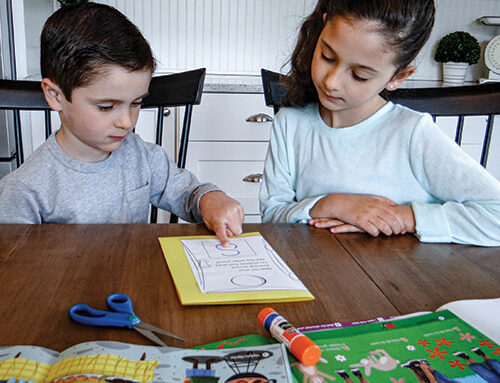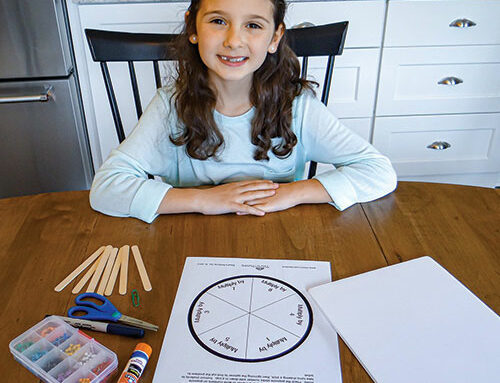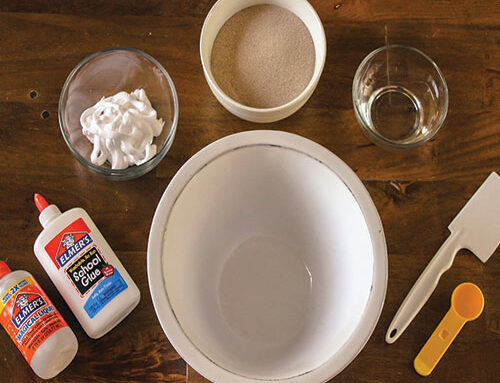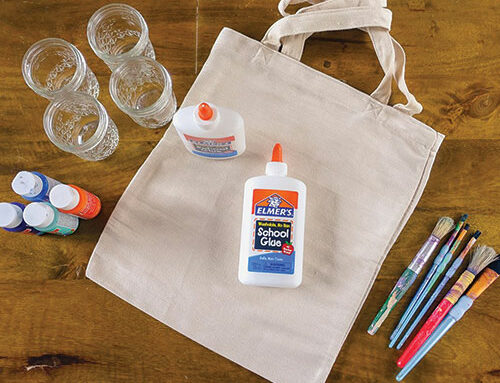Density Column
Stack oil on top of water on top of honey to create a density column.
Supplies Needed
(Note: If you don’t have one or two of the liquids on hand, just skip it! The density column will still work!)
Instructions
- Gather all your liquids for your density column. Measure out a ½ cup of each liquid and pour it into its own jar.
- Color your liquids. The honey and the maple syrup need dark colors, so we suggest dark blue or dark red. The corn syrup, glue, and water work best with the lighter colors to help contrast the darker ingredients. (Note: The food coloring won’t mix into the baby oil or vegetable oil. See our Level Up section below for a fun experiment to learn what happens with food coloring and oil.)
- Once you have all of your liquids colored, you can start layering. Start with the liquid with the highest density. (If you’re interested in learning how to calculate the density of each liquid, check out the STEAM extensions below.) Here is a list of liquids and their approximate densities. As you can see, honey is our highest density liquid, and baby oil is our lowest. Honey (1.42 kg/L); Light corn syrup (1.33 kg/L); Imitation maple syrup (1.32 kg/L); Elmer’s White School Glue (1.07 kg/L); Elmer’s Clear School Glue (1.03 kg/L); Water (1 kg/L); Vegetable oil (.92 kg/L); Baby oil (.83 kg/L)
- Start with your densest liquid (which, in this case, is the honey). Carefully pour it into the glass container without letting it touch the sides.
- Once the honey is settled, add the next densest liquid. (Tip: Pour the liquid over a spoon to keep it from disrupting the liquid below it. This helps distribute the liquid so that it doesn’t splash.)
- Continue to pour the liquids into the vase in order of density, pausing to let the liquids settle before pouring the next.
- Once you’ve added all the liquids, you may need to wait a few minutes for the liquids to settle into their respective layers. But once they do, stand back and admire your beautiful work!
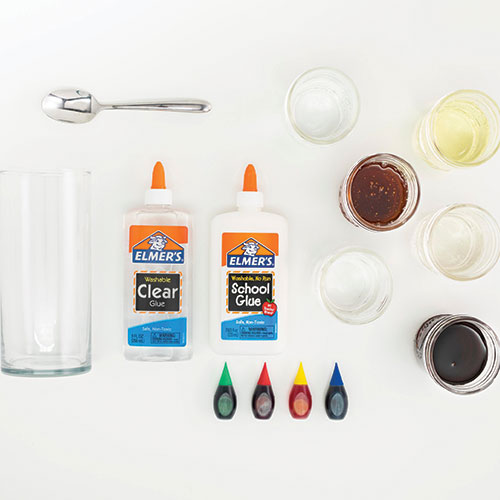
Learn More – STEAM Extensions:

Level Up – Options for Older Kids:
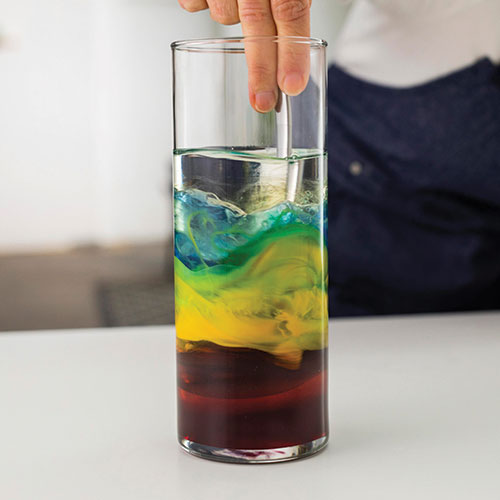
- Add food coloring to your column: Remember how we told you that oil and food coloring won’t mix? That’s because the food coloring has a higher density than the oil. Try putting a few drops of food coloring onto the top of your column. What happens? You should notice the food coloring slowly moving through the oil in streaks and then settling into the water layer. Because the food coloring isn’t as dense as the syrups, it should stop and rest on top of that layer.
- Make your own density experiment: Now that you know what density is, see if you can make a solid guess (or a hypothesis) about the density of various liquids. Open your refrigerator or bathroom cabinet and look at the various liquids inside. See if you can make a hypothesis about which liquids have the highest density and which have the lowest. Do you think apple juice is more or less dense than salad dressing? Do you think hand soap is more or less dense than facial oil? When you’re done making guesses, make a mini density column in a jar to test your hypotheses.
- Standards Alignment: Next Generation Science Standards: MS-PS1-2: Analyze and interpret data on the properties of substances before and after the substances interact to determine if a chemical reaction has occurred.
*Adult supervision is required; this project is not appropriate for children under the age of 3 years. Thoroughly wash your hands before and after making and playing with slime. Warning: If large quantities of contact lens solution are accidentally ingested (greater than a tablespoon), get medical attention immediately.
*Some contact solution brands work better than others, check out our Slime Tips section for all the details.

